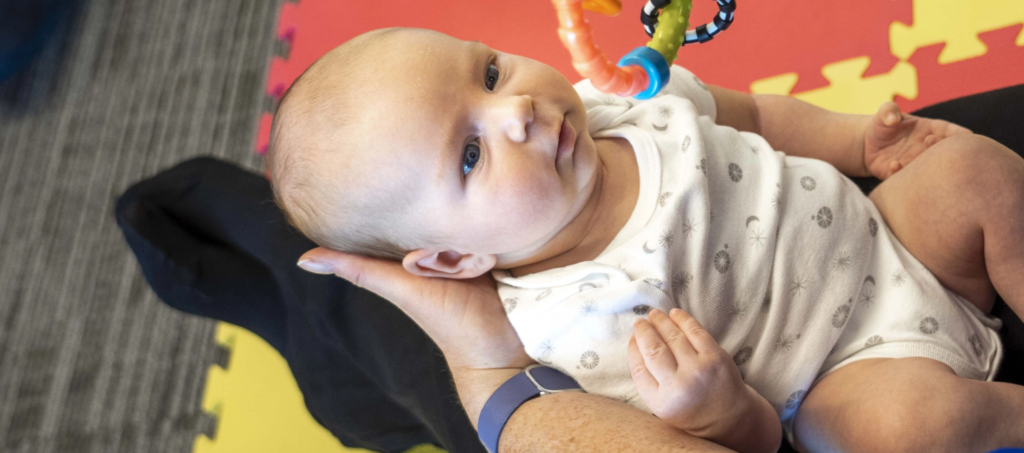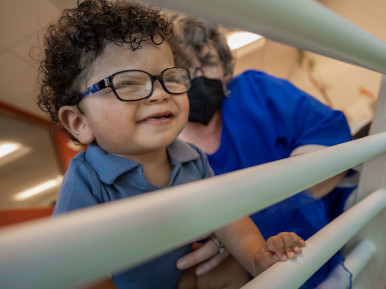CAREGIVERS
Sharing is caring
Caregivers are the most important people in an infant’s life. Professionals understand that you are often the expert in reporting your child’s difficulties, the most likely to notice if something isn’t quite right, and the most impactful in implementing therapeutic practices into daily family life. It can be difficult to carry the responsibility of being your child’s first line of defense, but it can also be empowering when you are equipped with the right tools and knowledge to advocate for your child. One potential developmental concern is Cerebral Palsy (CP). CP is a group of neurological disorders that result in difficulty with movement due to a brain abnormality that occurred before, during, or soon after birth.
CAREGIVER SUPPORT GROUPS
You are not alone! Navigating this journey can be overwhelming – it may be helpful to find a community of peers to share experiences with and to give and receive support.
Explore groups in the Los Angeles area, and find the right one for you.
INFANTS AT RISK FOR CEREBRAL PALSY
While CP can be diagnosed in infants and children during the first years of life, it may not be evident until the child is not meeting their developmental milestones. However, there are a number of medical reasons why a child may be at a higher risk of developing CP. Understanding these risk factors can empower caregivers with information to assist in monitoring their child’s growth and development, and to raise concerns with the child’s doctor. If your child is diagnoses with CP, there are many interventions and supports available. The most important thing to remember is the sooner we can identify children with CP, the sooner families can get help.
LEARN MORE: Use this as a guide to talk with your pediatrician or NICU doctor about if and why your baby may be at a higher risk of developing CP

You may feel unsure about what clues to look out for in the first year of life, or what is considered typical for development. If you are interested in learning more about expected milestones, screening and diagnosis, and the different types of CP, there are some helpful resources to consult. Guidelines from the CDC, the CP alliance, and the National Institutes of Health may all help further your understanding of CP.
Click here for a downloadable form you can share with your doctor for more information on milestones, signs, and symptoms
Despite the challenges associated with cerebral palsy (CP), children can still achieve many important developmental milestones. While the timeline may vary, some positive milestones that children with CP can reach include making eye contact and responding to stimuli early on, smiling, laughing, and engaging in social interactions.

ISSUES TO WATCH FOR
Children with cerebral palsy (CP) may experience motor difficulties, including challenges with movement, coordination, and muscle control. They may have speech and communication difficulties, such as articulation and clarity issues. Spasticity and muscle stiffness can affect their range of motion and coordination. Sensory issues and cognitive challenges may also be present, impacting their sensory processing and learning abilities. Additionally, emotional and social well-being can be affected due to physical limitations and communication barriers. It’s important to provide appropriate support, therapies, and interventions to address these issues and promote the child’s overall development and quality of life.

EARLY
INTERVENTION
& DIAGNOSIS
Perhaps you have already received information about your child being at high risk for developing CP, or you have concerns about their development from some of the information you have collected from the resources above. So what comes next? Caregivers can play a proactive role advocating for their child to push for earlier diagnosis and earlier access to intervention services.
- Report any concerns or early signs to your pediatrician
- If your baby was in the Neonatal Intensive Care Unit call and ask if they are eligible for an High Risk Infant Follow-up (HRIF) visit
- If eligible for HRIF, make and keep all appointments (babies do best with early and consistent intervention)
- Ask your doctor for a referral to one or all of the following (depending on eligibility): Regional Center, California Children’s Services, Outpatient Therapy services
To get more information and contacts about these steps, click here for a downloadable graphic.
DOWNLOAD CHART
Learn more with this American Academy of Pediatrics Checklist



